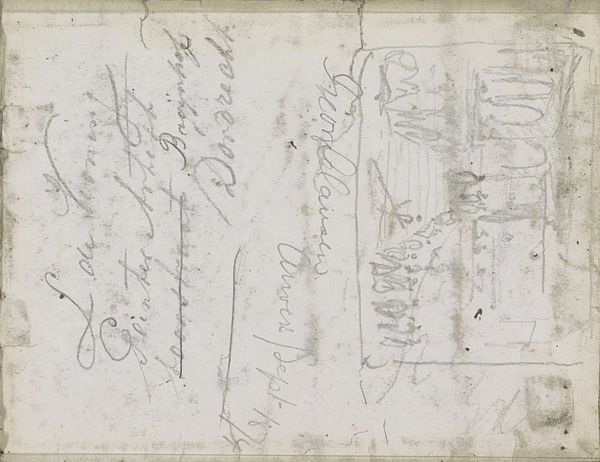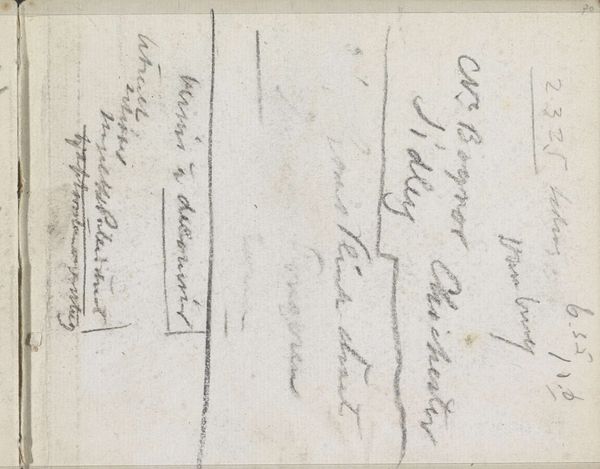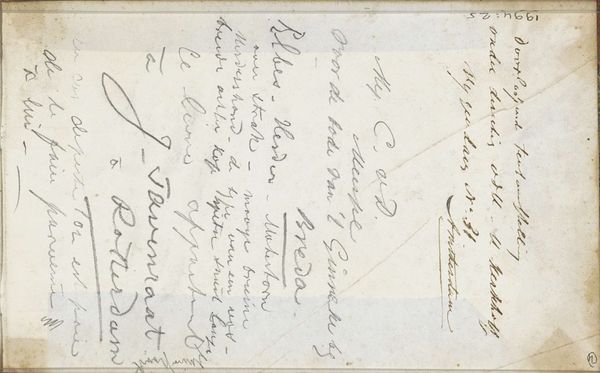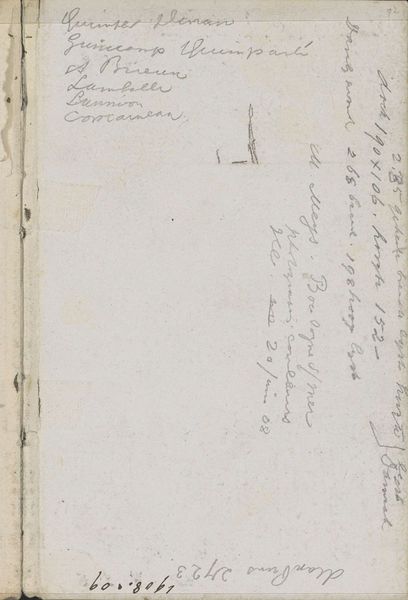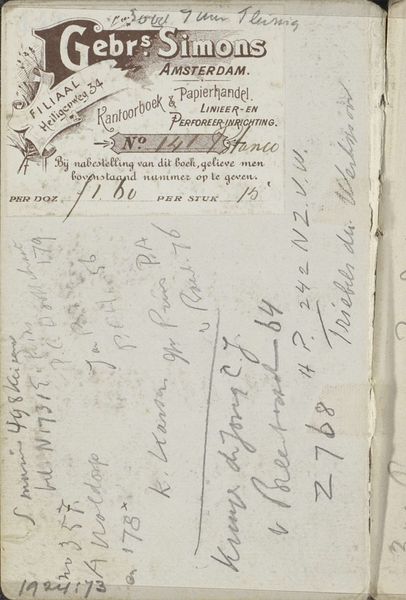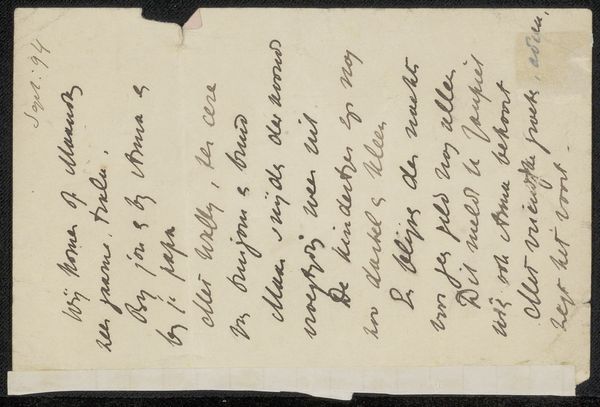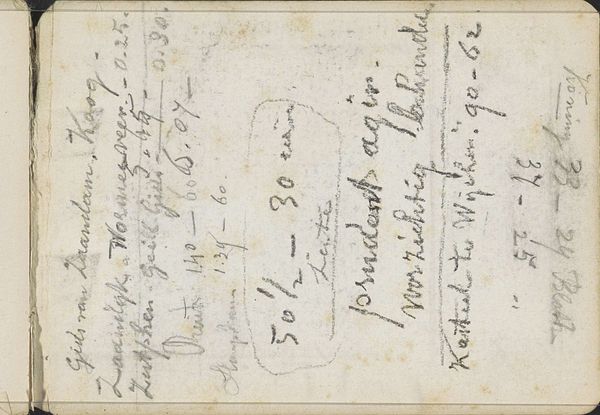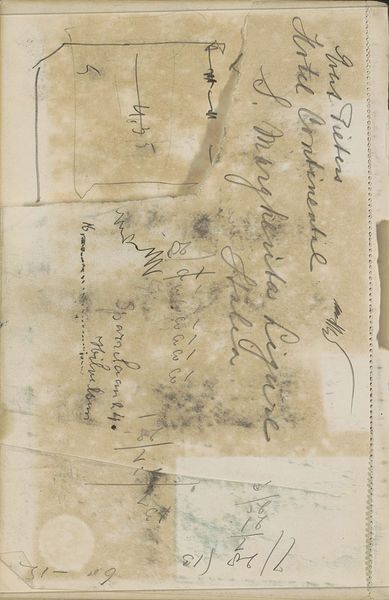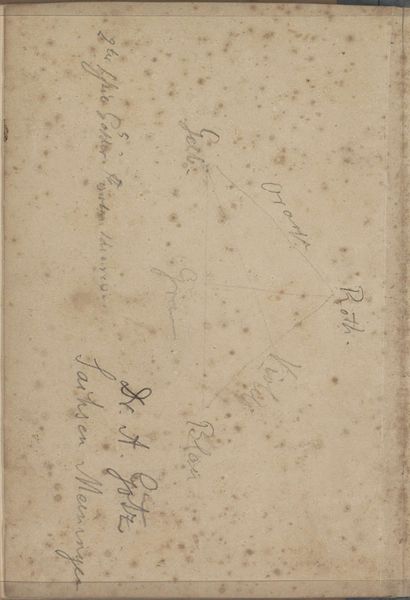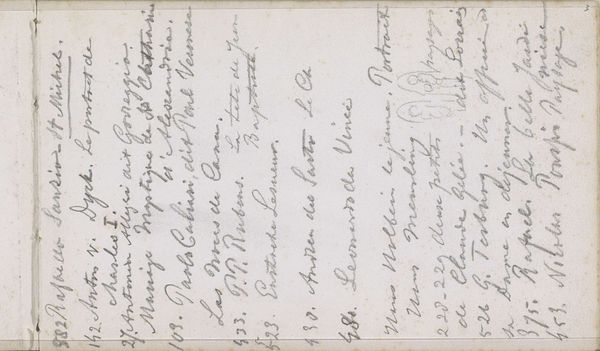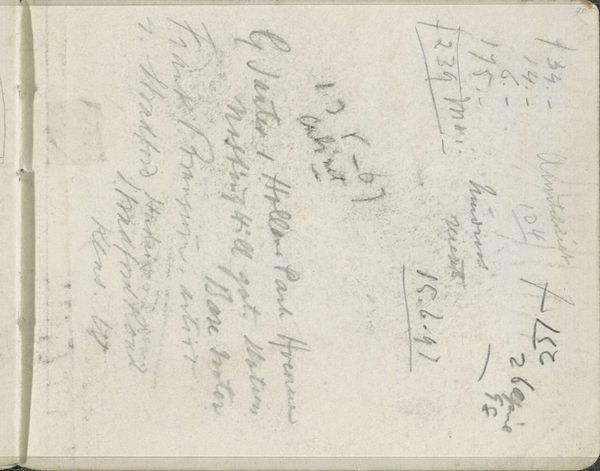
drawing, paper, ink, pencil
#
drawing
#
aged paper
#
hand written
#
hand-lettering
#
hand drawn type
#
hand lettering
#
paper
#
personal sketchbook
#
ink
#
hand-drawn typeface
#
fading type
#
pencil
#
sketchbook drawing
#
academic-art
#
sketchbook art
Copyright: Rijks Museum: Open Domain
Curator: This is George Hendrik Breitner's "Annotaties," created in 1917. It is a drawing made with ink and pencil on paper and is currently housed at the Rijksmuseum. The writing all over the page makes it appear busy and feels really intimate, like a peek into the artist’s personal thoughts. What do you see in this piece, considering his artistic practice? Editor: I am drawn to how the means of production here blur the line between art and personal documentation. Breitner wasn't just making a pretty picture; he was recording ideas, perhaps addresses. How do you interpret the relationship between the material act of writing and its possible artistic function in this case? Curator: Precisely! The paper itself, its texture and age, speaks to its own history of labor, doesn't it? Look at the fading ink, the pencil strokes; they aren't just lines forming letters but physical traces of Breitner’s hand, his process. This "Annotaties" challenges us to think about art-making not just as creating a finalized object, but as a series of actions, a record of labor using readily available materials. What do you think the mass production of paper enabled in terms of art creation at the time? Editor: So, the accessibility of paper enabled Breitner to constantly document ideas? I'm also wondering about the connection between “high art” and the “craft” of writing – Breitner seems to deliberately disregard these boundaries through materiality, because his labor has the result of artistic function AND note-taking function at the same time. I hadn't considered that perspective before. Curator: Exactly! Examining the material conditions reveals a more democratic approach to art. He used simple materials that were easily obtainable to document everyday thoughts. It seems Breitner used whatever was at hand to facilitate the process of production without limitation. This shows us how everyday materials may become a form of artistry through material processes. Editor: Seeing the connection to labor and the ease of creation allowed by accessible materials has opened a whole new appreciation for Breitner’s Annotaties. Thanks for making me see art with new eyes!
Comments
No comments
Be the first to comment and join the conversation on the ultimate creative platform.
